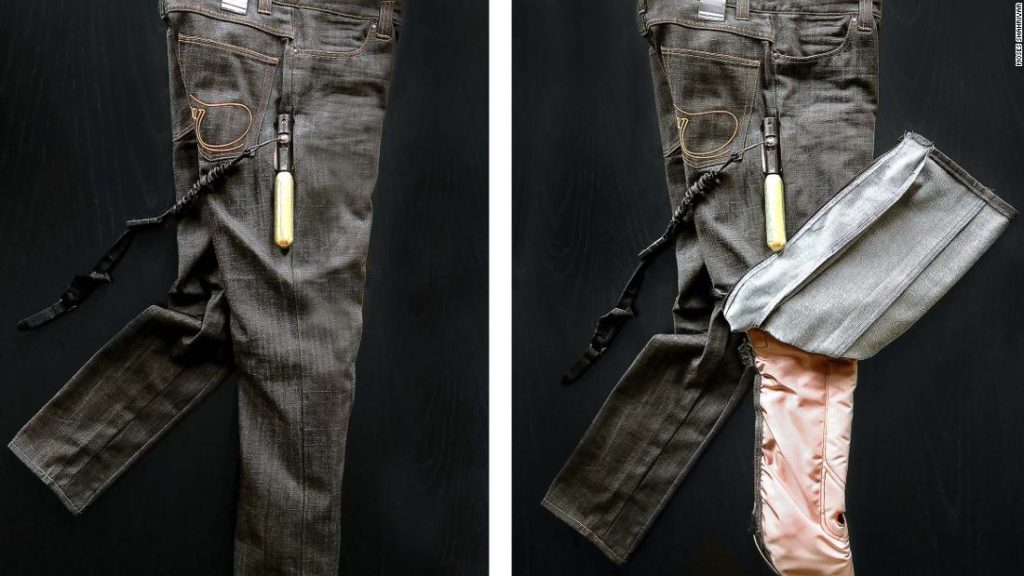But innovations in airbags could help keep motorcyclists safe.
The wearer tethers the jeans to their bike and if they fall from the motorcycle, the airbags are triggered, filling with compressed air and lessening the impact on the lower body. The airbag can then be deflated, refilled with gas and reassembled into the jeans to use again, explains Shahrivar.
Airbag Inside Sweden AB is in the process of getting the jeans certified to European health and safety standards and is putting them through a series of crash tests.
The company has raised €150,000 ($180,000) from the European Union to develop the idea and is hoping to bring the jeans to market in 2022. French company CX Air Dynamics has launched a crowdfunding campaign to develop a similar idea.
Airbag vests
Shahrivar says it’s the first time this kind of protection will be available for the lower body.
Equivalent technology for the upper body has been around for more than 20 years. Motorcycle airbag vests can be fitted under a jacket, and protect the chest, neck and sometimes the back.
Early versions were tethered to the bike, like Shahrivar’s jeans, but more recently, autonomous electronic airbags have been developed, which instead use high-tech sensors to detect when the rider is about to fall.
Among the autonomous airbags on the market is a system created by French firm In&motion.
The company started designing wearable airbags for professional skiers in 2011 and has since adapted the technology for motorcyclists. Rather than using a tether to trigger airbags, it has created a “brain” consisting of a GPS, gyroscope and accelerometer. A bit bigger than a smartphone, this box is placed in the back of any compatible vest.
“The sensors measure movements in real time and the algorithm is able to detect a fall or an accident to inflate the airbag just before a crash,” In&motion communication manager Anne-Laure Hoegeli tells CNN Business.
The box measures the position of the rider 1,000 times per second. As soon as an “unrecoverable imbalance” is detected the airbag triggers and fully inflates to protect the user’s thorax, abdomen, neck and spine, explains Hoegeli. This takes just 60 milliseconds.
In&motion recently raised €10 million ($12 million) in funding to expand in Europe and the United States.
While the basic operation is similar to other electronic airbags on the market, In&motion has an affordable subscription service, explains Emma Franklin, deputy editor of Motorcycle News. “Their system has in many ways made airbags more attainable for everyday people,” Franklin tells CNN Business.
Riders can either buy the box outright for $400 or rent it from In&motion for about $120 a year. Users in France also have access to a setting that calls emergency services in the event of a crash.
“From the few papers, case studies and articles I’ve seen, they look to be a very useful device,” says Frampton.
“I’m in favor of them — the chest, neck and spine are all areas where you can get life-threatening injuries.”
You may also like
-
Afghanistan: Civilian casualties hit record high amid US withdrawal, UN says
-
How Taiwan is trying to defend against a cyber ‘World War III’
-
Pandemic travel news this week: Quarantine escapes and airplane disguises
-
Why would anyone trust Brexit Britain again?
-
Black fungus: A second crisis is killing survivors of India’s worst Covid wave

